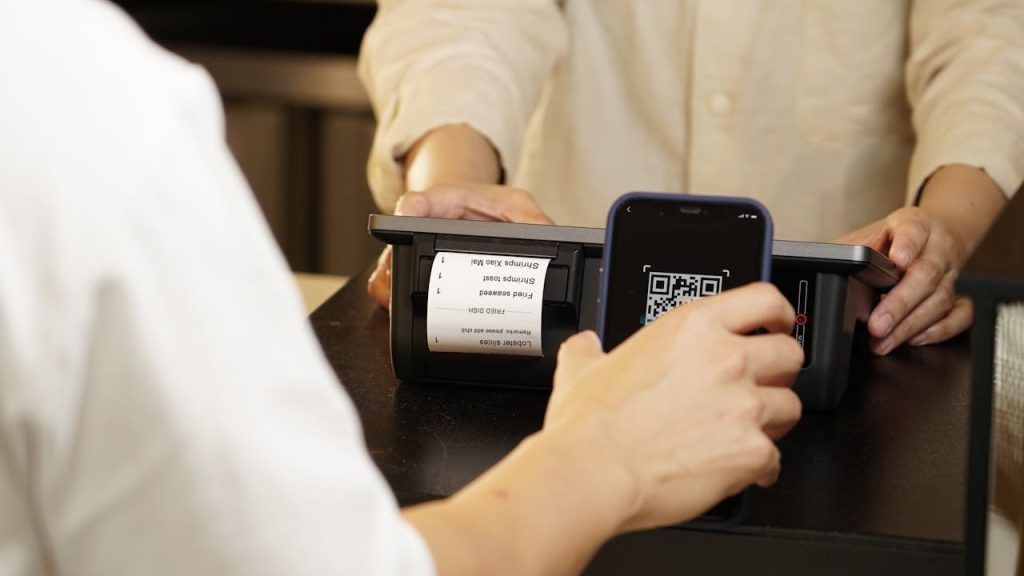Recently, Poland has witnessed a remarkable change in the way people handle payments, from cash-dominated transactions to widespread adoption of online transfers. The country’s payment systems evolved to meet the demands of the global digital age. Consumers and businesses alike now employ fast, secure, and convenient methods to transfer money, whether it’s for everyday shopping or digital entertainment.
Players in the world of legalne kasyno platforms greatly benefit from this shift, enjoying seamless digital transactions that build a smooth user experience. This convenience-first approach has spread to every aspect of modern living with the help of Blik — a revolutionary fast payment system.
Poles widely adopted this cashless payment system because of its simplicity and speed, which allows users to make instant payments directly from their mobile phones. Its growing popularity is a testament to how Polish consumers embrace innovation that makes their lives easier by eliminating the need for cards or cash.
As digital payments continue to become an integral part of daily life in Poland, the expert team at KasynaOnlinePolskie closely monitors the trends that shape this dynamic market.
The Perfect Storm: Why Poland Embraced Blik
Blik is an instant payment system that allows users to make online and in-store purchases, transfer money, and withdraw cash from ATMs. It does so by generating a unique one-time 6-digit code on their mobile banking app.
“The rapid success of Blik in Poland is not a mere accident,” explains Kuba Nowakowski, an author and gambling expert at KasynaOnlinePolskie. It was the result of a unique combination of market conditions that created a perfect environment for its adoption.
Poland has a specific financial profile, with the population having a high rate of bank account ownership. However, consumers have primarily used debit cards, showing less reliance on credit cards compared to other Western markets. This has made Poland an ideal market for a system like Blik, which directly accesses funds from a bank account rather than extending credit.
The country is now experiencing a mobile-first technological shift. Consumers are rapidly adopting smartphones to access the internet, bypassing older technologies. A phone-based payment system is a logical next step for a population that’s become accustomed to using mobile apps.
Several of the largest banks in Poland launched Blik as a joint project. This consortium model was crucial. It meant that Blik had built-in trust and widespread compatibility from its first day. Customers did not have to trust a new, unknown company with their money. Instead, they were using a service backed by their own familiar banks. “This foundation of trust and interoperability was key to convincing millions of Poles to try a new way to pay,” states Nowakowski.
The Elegance of Six Digits
The adoption of Blik in Poland is nothing short of phenomenal. It grew from a niche payment method to a fundamental part of the country’s financial system, with 19.4 million active users (June 2025). This means that over 51% of the population in Poland uses Blik for payments. Blik processes hundreds of millions of transactions per quarter. In the first half of 2025 alone, it handled 1.4 billion transactions — a 24% year-on-year increase.
This is not hard to imagine, given that Blik is also integrated with virtually all major Polish banks. So, if you have a bank account in Poland, you almost certainly have access to Blik through your bank application.
What Can You Do With Blik in Poland?
- E-commerce is the most frequent destination of Blik transfers, with nearly every major online retailer in Poland accepting Blik payments. The 6-digit identifier can be used for online shopping on Amazon and local digital marketplaces alike.
- Point-of-sale transfers are Blik’s specialty. Physical stores ranging from supermarkets to small independent cafes and kiosks allow Blik payments on their terminals by scanning a QR code.
- Peer-to-peer transfers happen instantly, so Blik’s end users can send money to friends and family or pay for individual services, like a handyman, through their mobile number.
- Digital services and subscriptions like Netflix and Spotify gladly accept Blik, and many Polish digital entertainment sites, like kasyno online Blik, effortlessly integrate this payment method.
- Financial services, like instant loan repayments, topping up brokerage accounts, and even some insurance companies, accept Blik in Poland.
- Bill payment providers, utility companies, and other service providers accept Blik for instant bill payments.
- ATM withdrawals are a signature feature of Blik, where users can generate a Blik code in their application to withdraw cash from an ATM without using their physical debit card.

The Blik Effect: How Poland Learned to Pay in a Blink
To pay via Blik, users only need to open their bank apps, generate a unique 6-digit code, and enter it at checkout. This works for online stores, in-person payments, and even cardless withdrawals from ATMs across the country.
Blik ensures secure transactions with minimal user effort. Your Blik purchase code is unique and expires quickly. As users are already safe inside their bank application, they are never required to give their bank account details to the seller or any other third party in the process.
This mix of speed and security is what made Blik a go-to option for online services that need instant payments. This is especially true in iGaming, where our team of industry experts at KasynaOnlinePolskie.com observes the Blik trend time and time again. Using Blik means deposits are immediate, fast, and safe. For businesses, this means faster and more reliable payments — a win-win for each side, which in turn drives Blik’s popularity.
Blik’s Influence on Polish Culture
Blik has quickly become a part of everyday life in Poland. It changed how people shop, dine out, and send money to each other. Today, Poles do all this with a few taps on their smart devices, all without having to dig into their wallets. This convenience makes cash and credit cards feel practically outdated. The speed of processing has changed how Poles expect transactions to work — not in hours, but in seconds.
This cultural shift is also reflected in linguistic adoption — the verb “zablinkowac” has entered common parlance, underscoring Blik’s deep-rooted status.
Everywhere in Poland, coworkers are using Blik to split lunch bills. Families are sharing costs instantly, and even older generations are catching up on the easy payments trend. Blik has definitely become more than just a tool — it’s a part of the daily rhythm woven into Polish culture.
Blik has democratized digital finance by bridging operational gaps. Its integration with familiar trusted banking apps provided a lower barrier to entry than standalone fintech products, encouraging adoption among older demographics. This has accelerated the decline of cash reliance, making seamless digital transactions the universal norm rather than a niche, tech-savvy behaviour. The result is a recalibrated cultural rhythm where financial interactions are nearly frictionless.

Blik: A National Standard With a Global Future
Blik has transcended its function as a mere payment method and has now become the foundational element of Poland’s digital economy. Its success is a powerful case study on how a well-designed solution built on trust and aligned with local consumer habits can achieve rapid, nationwide adoption. Mastering the critical balance of speed, security, and simplicity, Blik effectively revolutionized daily commerce and has become ingrained in the financial and social fabric of Poland.
What about its future beyond Poland? While its model is a perfect fit for the domestic market, Blik’s potential for international expansion remains a key point of interest. Experts claim it will become a template for other markets too, securing its legacy. In the meantime, Blik stands as a definitive example of homegrown innovation that successfully changed the behaviors of an entire nation by setting a new benchmark for what a modern payment system should look like.









